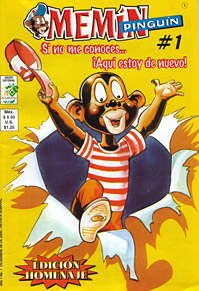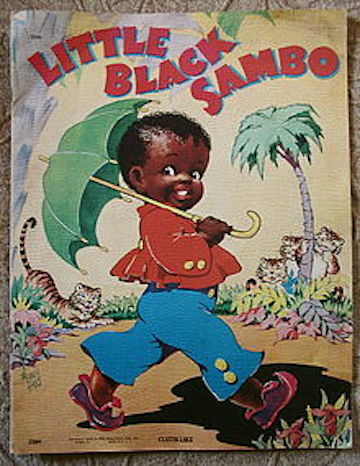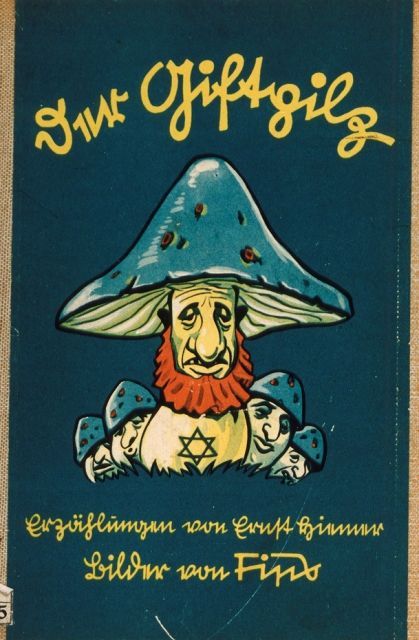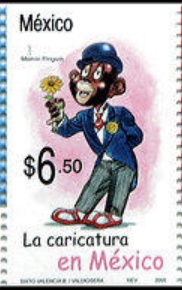A Cartoon Controversy
The Mexican cartoon character, Memin Pinguin, is a faded, but fond, memory to most Mexicans, but gained notoriety recently when Mexico issued a series of postage stamps honoring Memim and his creator.
Mexico issued a series of four stamps commemorating cartoonist Vargas Dulche and his cartoon character, Memim Pinguin. Memim was created in the 1940s and was one of Mexico’s best-selling comic books in the 1950s and 1960s.
Memim is a child who faces a variety of adventures and always gets by on his wits and moxie. The present controversy is the result of Memim’s appearance. Memin has black skin and exaggerated features. Generally, his appearance is reminiscent of the racist caricatures of African-Americans common in the U.S.A. in the 19th and the first two-thirds of the 20th Centuries.

Many in America (including some from the White House) have been highly critical of the stamps, and called upon Mexico to pull the stamps from the market.
Mexicans have defiantly reacted to the criticism. Many waited in line for hours at the post office to buy the postage stamps, and the stamps sold out two days after being released! The Mexican reaction appears to be one part resentment of American criticism and one part fondness of a childhood cartoon character.
Mexico’s president refused to pull the stamps from the market, reminding Americans that Memim is, after all, just a cartoon. Of course it is too late to pull the stamps anyway and they are already on the secondary market.

I hadn’t chimed in on this issue sooner because I was (and still am) torn by it.
On the one hand, the images of Memim are clearly racist – at least they would be if created by an American for an American audience.
They are very similar to the image of Sambo in the “Little Black Sambo” stories. These were cute children’s stories written over 100 years ago, but most people today find the images of the Sambo character offensive.

The Jim Crow Museum at Ferris State University (Big Rapids, Michigan) maintains racist memorabilla, including cartoons, for historical study. There are striking similarities between these racist images and that of Memim.
If you accept the ”it’s just a cartoon” defense, you may wish to take a look at some of the Nazi era cartoons depicting Jews. You can view some of these at this Calvin College (Grand Rapids, Michigan) site.

There is also a Nazi era children’s story about a poisonous mushroom, called ”The Toadstool”, which is a frightening tale of hatred within a children’s story book. Cartoons and children’s stories can have a profound impact upon attitudes and should not be easily dismissed.
On the other hand, it is not fair to insist that current-day Mexicans react to Memim the way that current-day Americans react to Sambo. The history, culture, and overall context of the characters are different. I’m not sure that you can so easily transfer one nation’s experiences onto another. What may be seen in one culture as racist may be seen as harmless in another.
I also think it is a bit arrogant and sanctimonious of Americans to be critical of Mexicans in this situation. There is a lot of work to do to eliminate racism here, without focusing on postage stamps south of the border.
It is also more than a little hypocritical, in light of the numerous negative image of Mexicans prevalent in the U.S. (Think Frito Bandito, Speedy Gonzales, and most Taco Bell commercials.) I suspect this is why Mexicans have been so defensive about American criticism of the Memim stamp.
And maybe we are going overboard in fear of offending anyone. A Washington Post columnist noted:
”Danger of offending racial sensibilities is not lost on contemporary American animators. Disney and DreamWorks are so leery that they have set entire movies in and around Africa (“The Lion King”, “Tarzan”, “Madagascar”) without once showing a single African.”
Perhaps we do need to chill out a bit.
